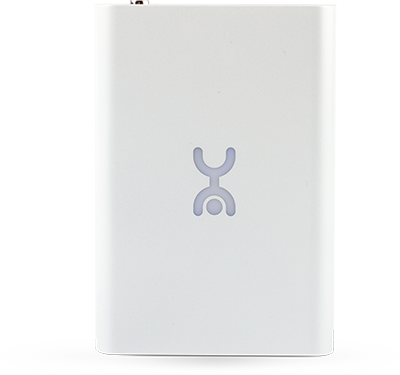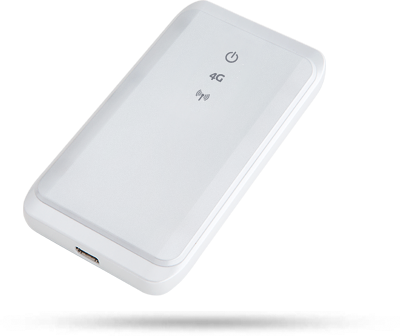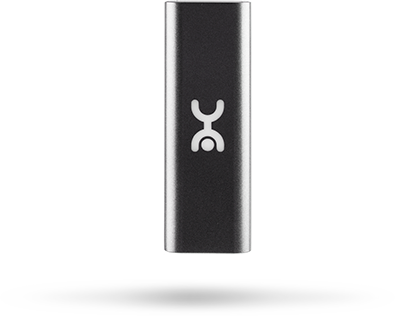Yota for office - what to choose
To date, the line of devices Yota has expanded significantly compared with several years earlier.
Friends and acquaintances often ask what is best to use and how, especially when it comes to accessing the Internet for a small office.
I will try to tell the pros and cons of each device, show examples of suitable use. For the basis I will consider a small office with a team of 5-10 people.
1. Yota Internet Center

Just want to recommend not to use this device.
(+):
All in one device.
(-):
The built-in WiMax module catches a bad signal from base stations (BS).
Limited number of ports.
The device was positioned by the company as a router + VoIP gateway. As far as I understand, in the settings they “play” with the QoS parameter, making voice traffic a priority. But in fact it really does not work.
Expensive solution.
')
2. Yota Many

Good model, but for office decision all the same expensive. Ideal for organizing access to the Internet in the car, on the street and just take to have it with you in your bag. Especially if you have mobile devices and / or several devices.
(+):
Compact.
Excellent battery charge.
Good antenna.
Presence of the function of prioritizing access between two groups: by password and guest (yota share).
(-):
Price.
If you do not set a password for WiFi, after some time, the device fails - you have to completely reset via Reset.
The administration functionality as a router is scant.
3. Mobile router

The model is very similar to Yota Many.
4. Wi-Fi modem Yota

The ideal solution for accessing the Internet and providing a local network via WiFi.
This device can be used just for the organization of the Internet access network in the office, but as a WiFi access point, the modem is weak and does not allow managing clients on a WiFi network.
(+):
Price.
Compactness.
Good reception of the BS signal.
(-):
Requires food.
I would like to manage local wifi and clients.
5. Modem Yota

Concluding point, we came to a simple modem Yota, in my opinion this is the best solution for organizing access to the Internet in a small office. When using a modem, you can connect it to any router (of course, it’s better to use a router with a WiFi module), and if you use more expensive models of routers (the price of which can reach insane numbers right up to 3000 rubles) that can build seamless wifi networks. Using a local WiFi network based on a router, we can manage both QoS and clients, monitor network and traffic, connect cheap VoIP gateways and much more.
Thus, for an office solution, you can make "turnkey" for about 3000 rubles (modem + router), which is clearly cheaper than previous models.
(+) and (-) are the same as the WiFI modem.
PS> I would like to give a few recommendations:
1. The Yota modem does not always give a good “window” signal, practice has shown that more often a modem installed in a corner of the room shows better results (ping / speed) than the same modem installed on a window.
2. If you use a modem, where the presence of the BS is extensive, when on / off, the modem can, while being in the same place, connect to different BS. When determining a good location for receiving a signal from a BS, install a modem, if on some day the speed dropped, do not rush to change the modem's location, turn off, wait a couple of minutes and turn on again - it is quite possible that your modem has reconnected to another BS. This information about the signal level, ssid BS you can always see by accessing the resource 10.0.0.1 in the browser.
3. You can try to increase the signal level (and speed) by installing a plastic antenna (costs around 1000 rubles).

Friends and acquaintances often ask what is best to use and how, especially when it comes to accessing the Internet for a small office.
I will try to tell the pros and cons of each device, show examples of suitable use. For the basis I will consider a small office with a team of 5-10 people.
1. Yota Internet Center

Just want to recommend not to use this device.
(+):
All in one device.
(-):
The built-in WiMax module catches a bad signal from base stations (BS).
Limited number of ports.
The device was positioned by the company as a router + VoIP gateway. As far as I understand, in the settings they “play” with the QoS parameter, making voice traffic a priority. But in fact it really does not work.
Expensive solution.
')
2. Yota Many

Good model, but for office decision all the same expensive. Ideal for organizing access to the Internet in the car, on the street and just take to have it with you in your bag. Especially if you have mobile devices and / or several devices.
(+):
Compact.
Excellent battery charge.
Good antenna.
Presence of the function of prioritizing access between two groups: by password and guest (yota share).
(-):
Price.
If you do not set a password for WiFi, after some time, the device fails - you have to completely reset via Reset.
The administration functionality as a router is scant.
3. Mobile router

The model is very similar to Yota Many.
4. Wi-Fi modem Yota

The ideal solution for accessing the Internet and providing a local network via WiFi.
This device can be used just for the organization of the Internet access network in the office, but as a WiFi access point, the modem is weak and does not allow managing clients on a WiFi network.
(+):
Price.
Compactness.
Good reception of the BS signal.
(-):
Requires food.
I would like to manage local wifi and clients.
5. Modem Yota

Concluding point, we came to a simple modem Yota, in my opinion this is the best solution for organizing access to the Internet in a small office. When using a modem, you can connect it to any router (of course, it’s better to use a router with a WiFi module), and if you use more expensive models of routers (the price of which can reach insane numbers right up to 3000 rubles) that can build seamless wifi networks. Using a local WiFi network based on a router, we can manage both QoS and clients, monitor network and traffic, connect cheap VoIP gateways and much more.
Thus, for an office solution, you can make "turnkey" for about 3000 rubles (modem + router), which is clearly cheaper than previous models.
(+) and (-) are the same as the WiFI modem.
PS> I would like to give a few recommendations:
1. The Yota modem does not always give a good “window” signal, practice has shown that more often a modem installed in a corner of the room shows better results (ping / speed) than the same modem installed on a window.
2. If you use a modem, where the presence of the BS is extensive, when on / off, the modem can, while being in the same place, connect to different BS. When determining a good location for receiving a signal from a BS, install a modem, if on some day the speed dropped, do not rush to change the modem's location, turn off, wait a couple of minutes and turn on again - it is quite possible that your modem has reconnected to another BS. This information about the signal level, ssid BS you can always see by accessing the resource 10.0.0.1 in the browser.
3. You can try to increase the signal level (and speed) by installing a plastic antenna (costs around 1000 rubles).

Source: https://habr.com/ru/post/235179/
All Articles